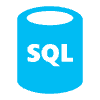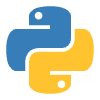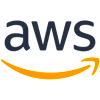Beyond Upwork: Specialized Marketplaces for Hiring Freelance Data Engineers

Beyond Upwork: Specialized Marketplaces for Hiring Freelance Data Engineers
What Is a Specialized Marketplace for Data Engineers?
7 Platforms That Surpass Upwork
1. Contra
2. Arc.dev
3. Kolabtree
4. Blackbear
5. Toptal
6. Guru
7. Fiverr Pro
Steps To Evaluate Marketplace Quality and Fit
1. Check Technical Vetting
2. Compare Fee Structures
3. Prioritize Collaboration Features
Why Data Engineers Prefer Specialized Networks
1. Advanced Matching Algorithms
2. Access to Data-Focused Communities
Building a Strong Freelance Data Engineering Project
1. Define Goals Clearly
2. Align Project Lifecycle
3. Establish Communication Protocols
FAQs About Hiring Freelance Data Engineers
Who is the biggest competitor to Upwork?
What is the hourly rate for freelance data engineers?
Which marketplace is best for freelancing?
Can I hire someone outside of Upwork?
Looking Ahead to Successful Data Engineering Hires
Beyond Upwork: Specialized Marketplaces for Hiring Freelance Data Engineers
What Is a Specialized Marketplace for Data Engineers?
“It’s kind of like the difference between shopping at a department store and walking into a hardware shop where every tool has a specific purpose.”
7 Platforms That Surpass Upwork
1. Contra
2. Arc.dev
3. Kolabtree
4. Blackbear
5. Toptal
6. Guru
7. Fiverr Pro
Steps To Evaluate Marketplace Quality and Fit
1. Check Technical Vetting
“If the platform says �‘available now’ but doesn’t show any past data architecture or ETL work—keep scrolling.”
2. Compare Fee Structures
3. Prioritize Collaboration Features
“Sending CSVs over email is fine until someone overwrites the wrong file and now your dashboard says sales were $0 last month 😬”
Why Data Engineers Prefer Specialized Networks
“If your resume says ‘built a data pipeline’ and the job was renaming CSV columns in Excel, these platforms will find you out fast 😅”
1. Advanced Matching Algorithms
2. Access to Data-Focused Communities
“Reading someone’s breakdown of why their Spark job failed at scale is more useful than three pages of marketing copy.”
Building a Strong Freelance Data Engineering Project
1. Define Goals Clearly
2. Align Project Lifecycle
3. Establish Communication Protocols
“No update doesn’t mean no issue—it usually means someone is debugging an edge case in silence 🧩”
FAQs About Hiring Freelance Data Engineers
Who is the biggest competitor to Upwork?
“It’s not always about the biggest competitor—it’s about finding the right fit without overpaying or under-vetting.”
What is the hourly rate for freelance data engineers?
Which marketplace is best for freelancing?
“Choosing a platform is like picking a data tool—don’t use Apache Beam when a cron job will do.”
Can I hire someone outside of Upwork?
Looking Ahead to Successful Data Engineering Hires
“Trying to manage a Kafka rollout through email threads is like debugging code with a blindfold on 🧵👨💻”
Posted Apr 14, 2025
Beyond Upwork, find specialized marketplaces for hiring freelance data engineers with vetted skills in ETL, cloud pipelines, and real-time analytics.












